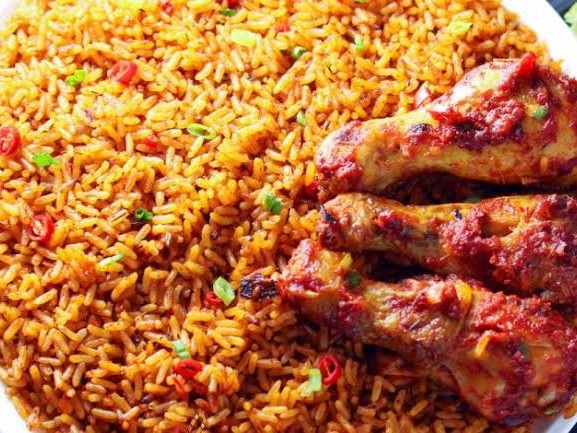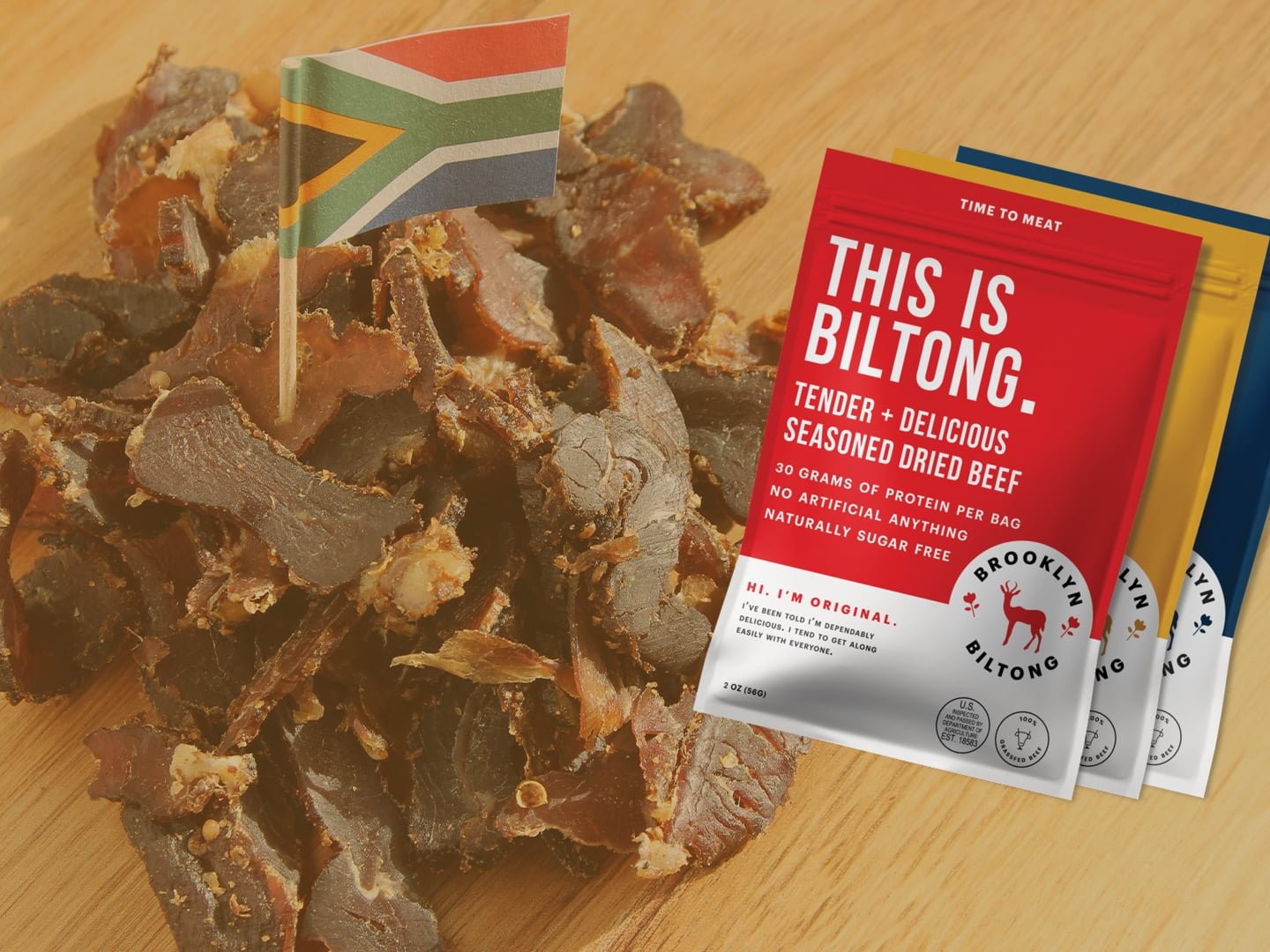Share this!
What’s the Big Deal about Jollof Rice? A History
Jollof Rice is a popular dish eaten in most parts of West Africa, most notably Ghana, Senegal, The Gambia, and Nigeria. Though many of the dishes share similarities, there are variations in nomenclature and differences in the kind of ingredients used. For instance, the Senegalese and the Gambians refer to it as ceebujenn or bennachin respectively. In French-speaking areas, you will hear Jollof Rice referenced as riz au gras.
The big deal about Jollof Rice
Several theories exist as to how Jollof Rice came to be. It is important to note that the meal has dispersed throughout West Africa and there is no recorded history to prove one country’s ownership over the meal. Hence, you may be forgiven if you think Jollof Rice originated from say Nigeria or Ghana. In fact, polls show that a great majority believe one or both of these countries own the unofficial rights to the meal.
However, this claim stands on unsure ground, to say the least. The most plausible theory comes from the Wolof people where they named the dish bennachin, or “one pot”. The Wolof people are currently the biggest ethnic group in Senegal and The Gambia; they have a history in West Africa dating back to 1360. At the time when they were an empire, the Wolof people traded with Europeans and facilitated the exchange between commodities and technical skills such as blacksmithing, small-scale marketing, and rice agronomy. Before the empire declined, the Wolof people had succeeded in spreading their culture and way of life, including the gift of Jollof Rice.
The ingredients
Jollof Rice is a meal comprising of rice, tomatoes, tomato paste, onions, peppers, salt, spices, and vegetable oil. While there are different modifications added to Jollof Rice dishes depending on the country, you can always find these core ingredients across the Jollof Rice spectrum.
The big deal regarding the status of Jollof Rice
Jollof Rice is the premiere dish of West Africa. It is wrong for you to visit a West African nation and not try their take on Jollof Rice – refusing a taste from anyone that offers their love is even a worse offense.
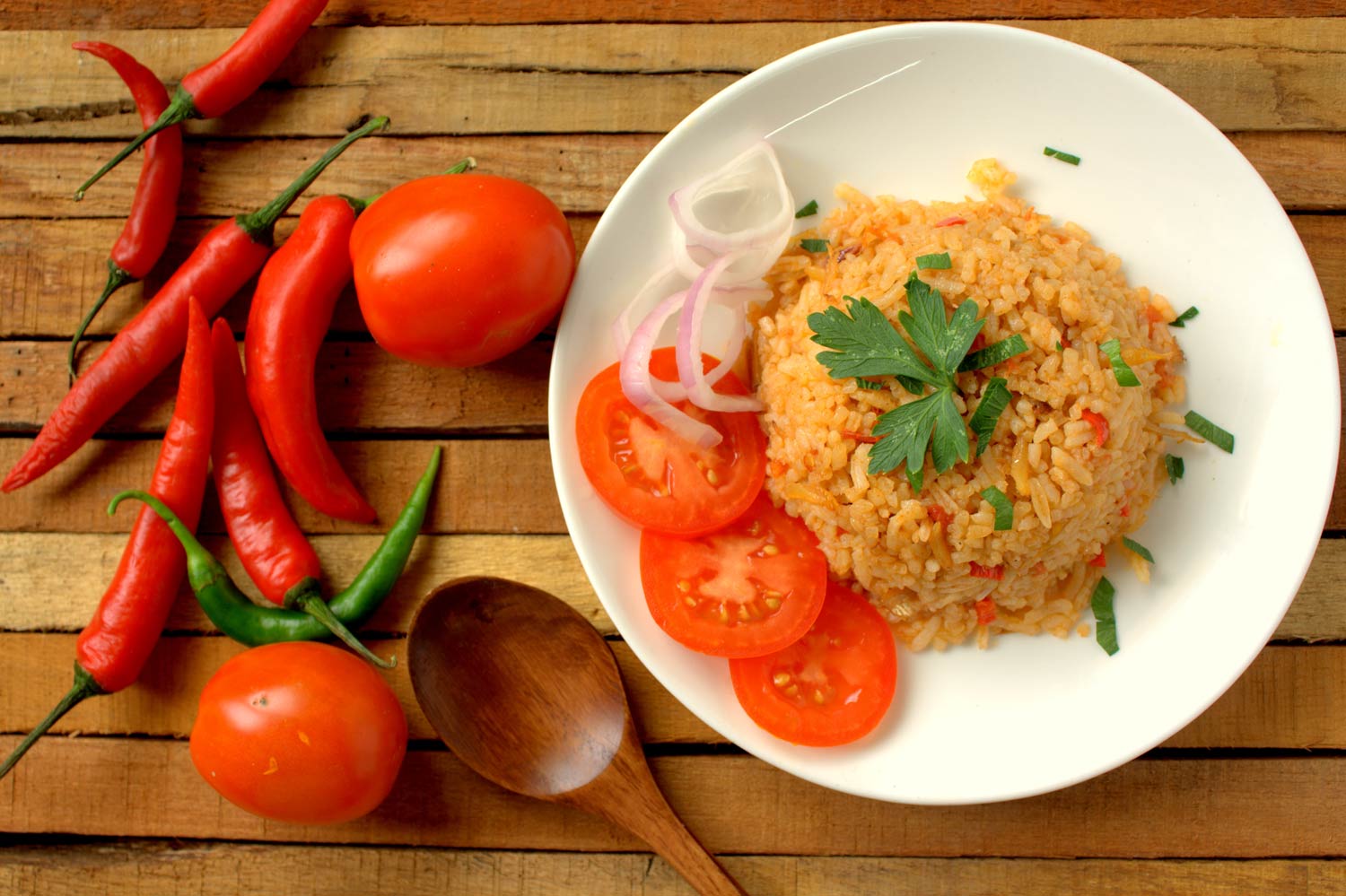
The love for Jollof Rice is so immense that a government official received criticism for comments he made about the the dish that were practically sacrilegious. Nigeria’s current Information Minister committed the “cardinal sin” when he accidentally made remarks stating that Senegal cooked the best version of the dish in West Africa. The comments occurred during an interview session he had with CNN reporter Richard Quest. The minister was stripped bare on social media by his compatriots, who rose to the defense of the indisputable crown held by Nigeria’s Jollof Rice.
To better prepare you with your Jollof Rice knowledge quest, it is important to know the definition according to the informal Nigerian Lexicon:
- Jollof (noun, verb), denoting a state of enjoyment;
‘Look at her, as she’s jollofing’ (she’s enjoying herself!).
Synonyms include enjoyment and pleasure. And if you’re new to the world of Jollof, be advised that you should never spell Jollof with a lowercase ‘j’ since the dish is so revered.
Who makes the “Best Jollof Rice Dish” in Africa?
There have been great debates across the West African sub-region as to who holds the crown in preparing the best version of Jollof Rice. While various countries lay claim to the throne, no rivalry gets bigger and better than that existing between Ghana, Nigeria, and Senegal.
These countries already slug it out on many other fronts like sports (especially football), tourism, and cultural refinement amongst others. But in the debate of who cooks the best Jollof Rice, each of there countries will always say they are the best.
In examining the debate properly, expect to find Nigerians pushing their case with an air of smoking superiority, the Ghanaians adding a spicy flair to showcase the nation’s feisty attitude, and Senegal relying on a classic recipe.
To better contextualize the argument, it is best to examine the versions of the three countries.
Ghanaian Jollof Rice
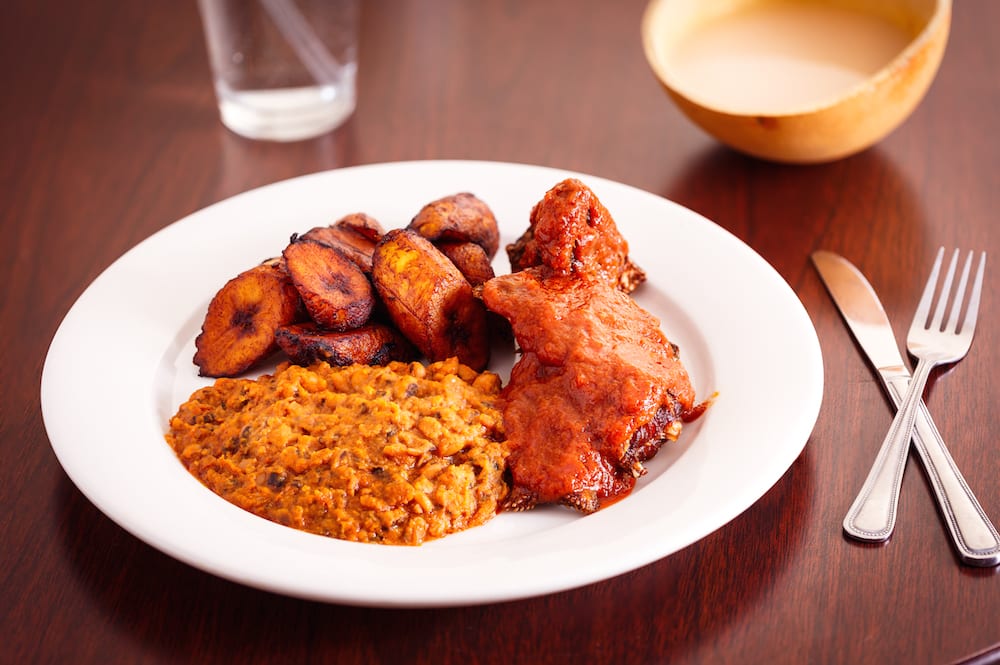
Jollof Rice eaten in Ghana differs from those of their counterparts – the biggest difference being the type of rice used. Ghanaians love Thai Jasmine, a perfumed starchier type of rice which also goes by the name “basmati”. The long-grained variety, a favorite spec in Nigeria and sometimes in Senegal, is somewhat of an anathema in Ghana!
Another point to be made is the cooking style. In Ghana, the primary ingredients include vegetable oil, onion, bell pepper, cloves of pressed garlic, chilies, tomato paste, beef or chicken, mixed vegetables (sometimes added) and black pepper. The process begins with preparing the chicken or beef by seasoning and frying it until it is well cooked. The rest of the ingredients are all then fried; starting with onions, tomatoes, and spices respectively.
Once the cook attains the perfect amount of fried condiments, the rice is added. It is then cooked until the meal can be served.
For good measure, the basmati rice is never parboiled! If the rice is parboiled, you will end up with a soggy mess.
Nigerian Jollof Rice
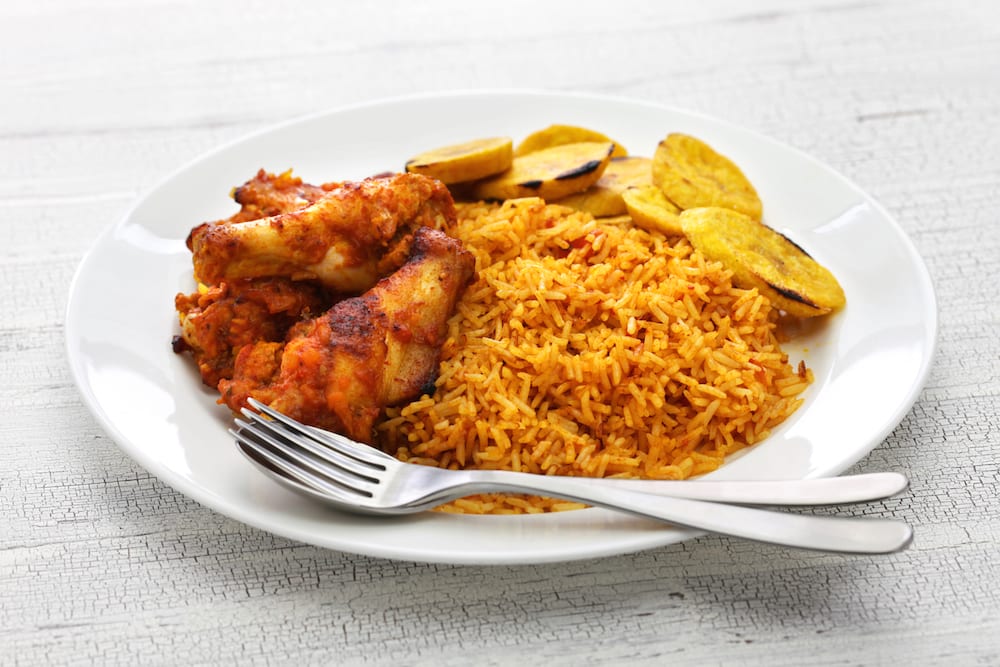
Jollof Rice, which is prepared the Nigerian way, includes ingredients such as long grain parboiled rice, tomatoes and tomato paste, pepper, vegetable oil, onions, and stock cubes. Additional condiments such as chicken or meat stock, curry powder, garlic, white pepper, crayfish, and bay leaves also add to the taste/flavor of the Jollof Rice.
In Nigeria, a fried tomato and pepper puree typically forms the base for the process. Then, the chicken or meat stock, onion, and stock cubes enter the brew and are simmered. Finally, after the rice is washed, it is added to the newly created broth and can be served soon after.
Popular accompaniments to the meal will include tasty foods like fried plantains, moi moi, steamed vegetables, coleslaw, and Nigerian salad.
Do you really want to taste an extra kick in your Nigerian Jollof Rice? If so, you should ask for “Party Jollof Rice”- a smokier version of the dish that is often cooked in a cast iron pot over firewood or charcoal fire.
Senegalese Jollof Rice
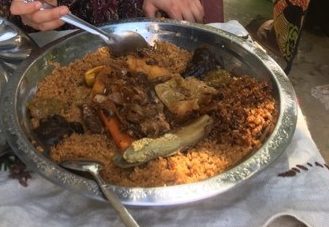
Ghana and Nigeria are the biggest names in Jollof, but don’t pass over the original creators of the dish. Although there are variations under the umbrella of Jollof Rice in Senegal, the most common and traditional of them include carrots, (grouper-like) fish, peppers, bissap, eggplant, cabbage, potatoes, vegetable oil, Adja/Joker spice boxes, and tomato broth. Senegalese chefs typically prefer medium grain rice over others when cooking.
Unlike the other two countries, Senegalese cooking involves large amounts of food to be cooked since meals are shared and are never for one individual. The rice is steamed over the pot used to cook the dry and wet ingredients with a saucer; then, before serving, the tomato sauce is poured on the rice and the ingredients will be arranged on top of the rice.
You can find ceebujenn at every restaurant and home in Senegal. Some mothers who cook for their family like to cook with different broths and add/remove spices dependent on the time of day.
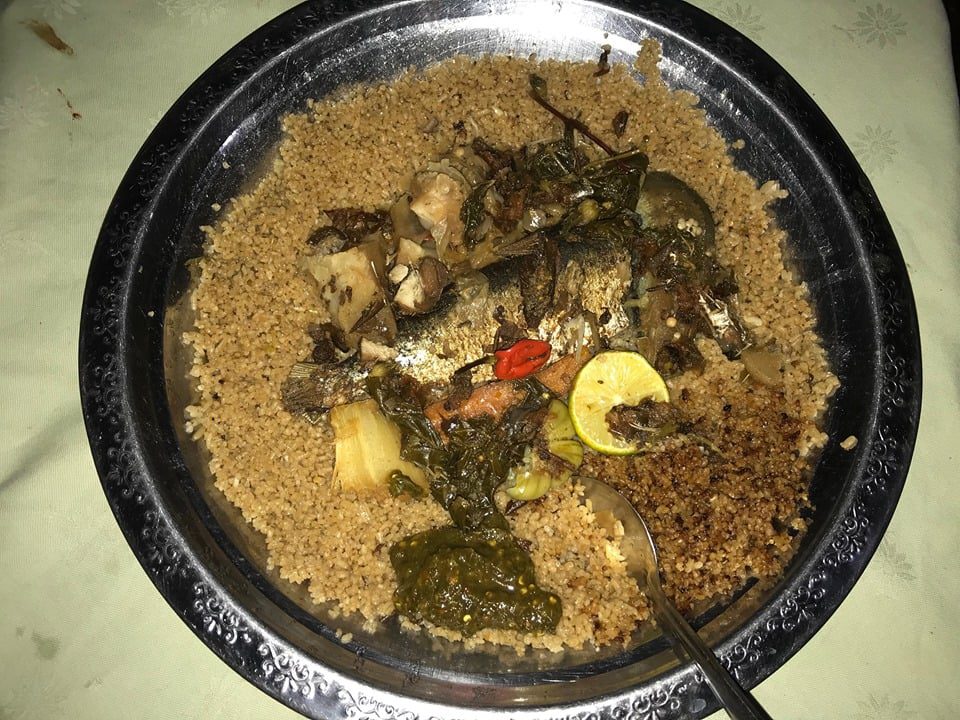
The big deal with your verdict
Your verdict regarding which country cooks the best Jollof Rice is of little consequence because the taste is most important, and all three provide it.
Furthermore, you must understand that each warring party (country) has a unique offering and interpretation of Jollof Rice, especially since the basic ingredients do not differ: rice, tomatoes, onions, peppers, and spices.
Wherever you go, take the time to enjoy the version of Jollof served, pay your host generous amounts of compliments, and as much as humanly possible, remain on the divide when the argument arises as to who cooks the best Jollof Rice!
*Edits were made on July 2nd of 2019 to improve the accuracy of information presented. Furthermore, the section named “Senegalese Jollof Rice” was added to the current edition.





